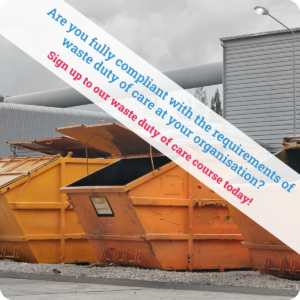Jurisdiction: Wales
Commencement: 31st December 2022
Amends: The Water Resources (Control of Agricultural Pollution) (Wales) Regulations 2021
The Water Resources (Control of Agricultural Pollution) (Wales) Regulations 2021 implement measures to address agricultural pollution in Wales by setting rules for certain farming practices.
They apply to all farm businesses in Wales. Anyone who is the owner or occupier (e.g. tenants, graziers) of an agricultural land holding (regardless of its size) is responsible for complying with these Regulations.
Provisions are included around the following:
- nutrient management planning;
- sustainable fertiliser applications linked to the requirement of the crop;
- protection of water from pollution related to when, where and how fertiliser are spread; and
- manure and silage storage standards.
Natural Resources Wales (NRW) is responsible for enforcing these Regulations.
Revocations
Previously, water quality was protected by preventing nitrates from agricultural sources polluting ground and surface waters via Nitrate Vulnerable Zones (NVZs)* that were in place and these Regulations revoke and replace The Nitrate Pollution Prevention (Wales) Regulations 2013, which means the existing NVZ designations are no longer applicable.
These Regulations also revoke and replace The Water Resources (Control of Pollution) (Silage and Slurry)(Wales) Regulations 2010 as these Regulations now set the requirements for silage making, storage of silage effluent and for slurry storage systems. The Regulations are revoked in how they apply to farms situated in a NVZ from 1st April 2021 and fully for all other farms from 1st April 2024.
*Nitrate Vulnerable Zones (NVZs) are areas within Wales that contain surface water or groundwater that is susceptible to nitrate pollution from agricultural activities. A map of these areas can be found here. Note that these Regulations have now replaced NVZs.
Transition period
Requirements are being phased in for farms not previously located in a NVZ over three years, with certain requirements applying from 1st January 2023, 30th April 2023 and 1st April 2024:
- Regulations 4 and 36 apply from 30th April 2023.
- Regulations 5 to 11, 15, 23, 27 and 33 to 43 apply from 1st January 2023.
- Regulations 17 to 21, 25 and 26, and 28 to 31 apply from 1st August 2024.
All other parts of the Regulations applied from 1st April 2021. More information can be found in the duties section below. For farms that were previously located in a NVZ, they needed to be compliant with the Regulations on 1st April 2021 (the date they come into force).
Various duties apply.
An abbreviation for Nitrate Vulnerable Zones Index Map 2013 (NVZ index map) is added.
The implementation date for regulation 4 (Application of livestock manure – total nitrogen limit for the whole holding) and regulation 36 (Record of nitrogen produced by animals on the holding) is amended. Regulations 4 and 36 will now come into force on 30th April 2023.
Requirements are added for occupiers of a holding or part of a holding that was not previously located within a Nitrate Vulnerable Zone. These requirements are set out below.
- The occupier must ensure that the total amount of nitrogen in livestock manure does not exceed 170 kilograms per hectare in any 12 month period* from 30th April 2023.
- The occupier must report the following by 31st August 2024.
- The number and category of animals on the holding during the previous 12 month period.
- The number of days each animal spent on the holding during the previous 12 month period.
*12 month period means the period 30th April to 29th April.
Schedule 1 (Amount of manure, nitrogen and phosphate produced by grazing livestock and non-grazing livestock) and Schedule 3 (Calculating nitrogen in organic manure) are amended as follows.
- Daily phosphate produced by dairy cows must not exceed 69 grams per dairy cow.
- Daily nitrogen produced by sheep weighing 60 kilograms or more must not exceed 33 grams per sheep.
- Total nitrogen in manure from turkeys or broiler chickens must not exceed 30 kilograms per tonne.
There are no changes to duties for organisations.
The Legislation Update Service is the best way to stay up to date automatically with legislation in England, Wales, Scotland, Northern Ireland and the Republic of Ireland.
Sign up for your free trial to get instant access.
